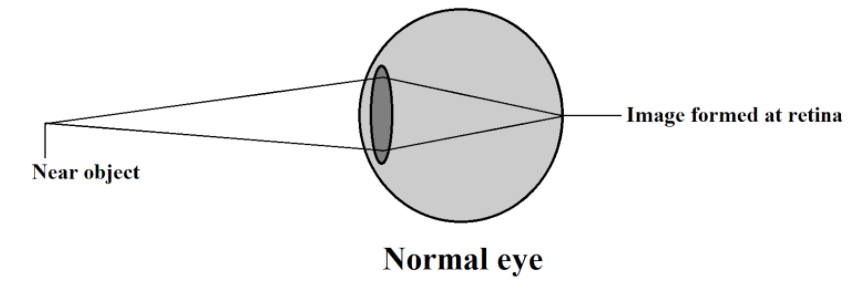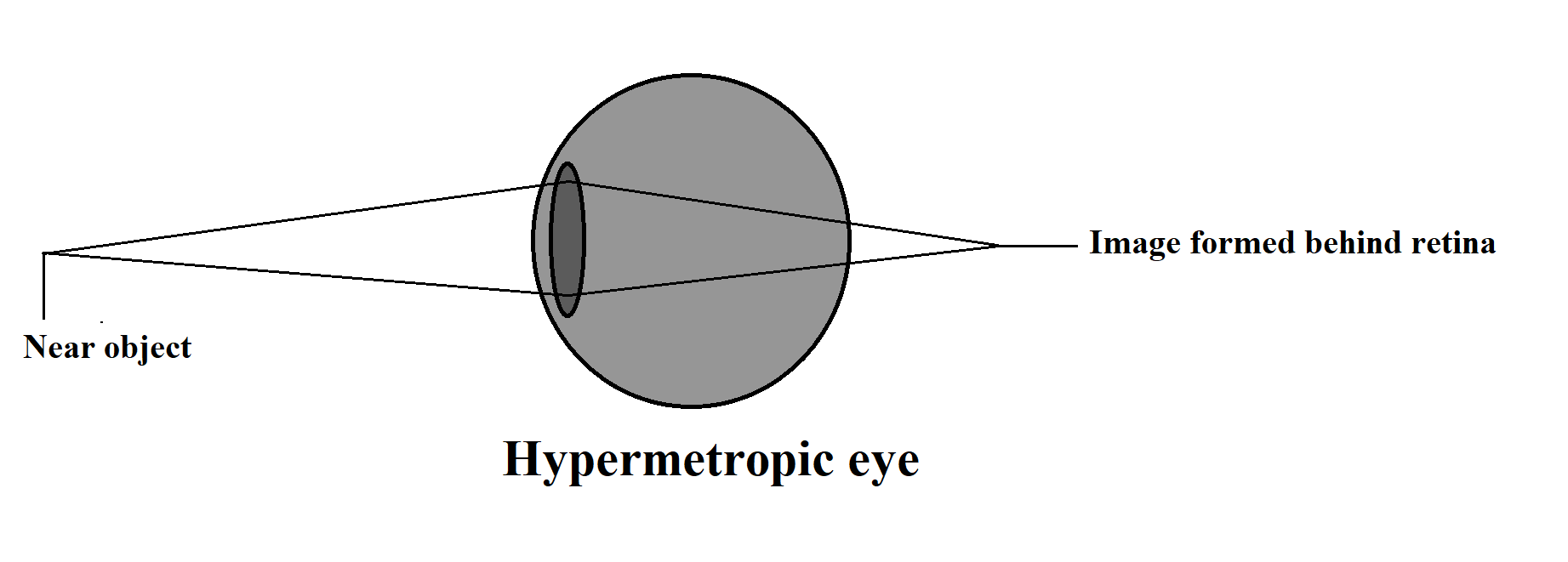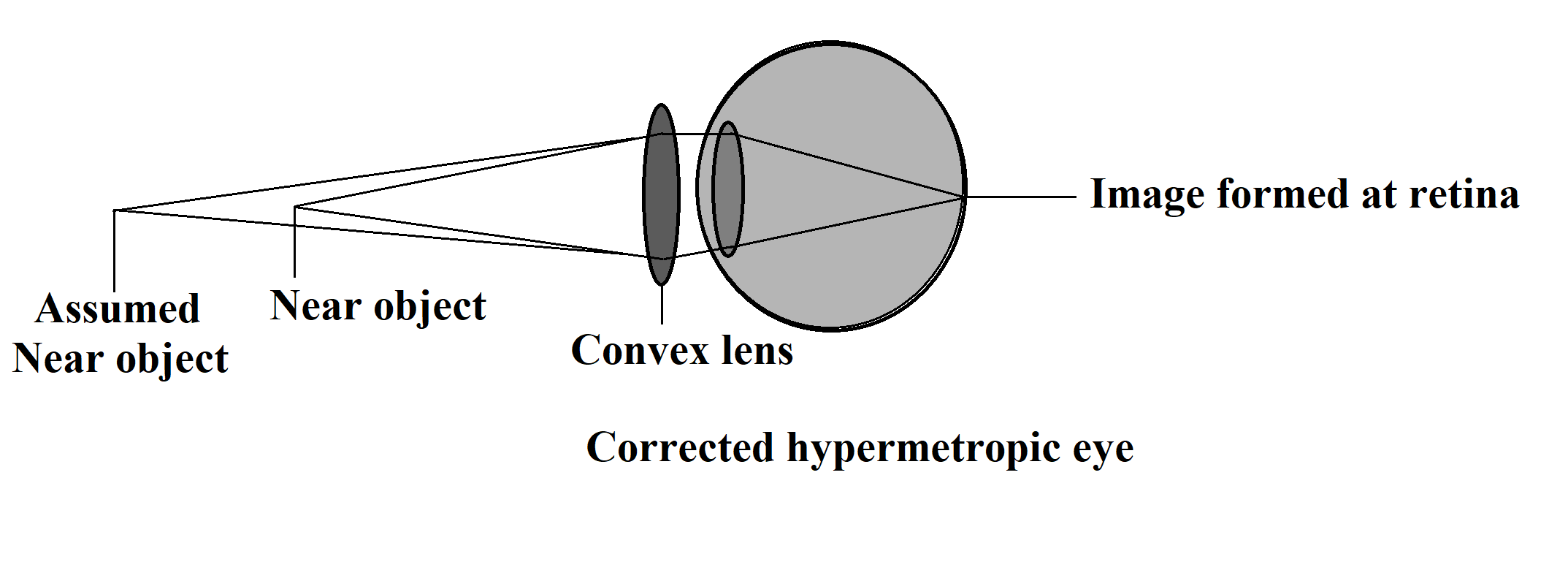
Answer
454.8k+ views
Hint: Hypermetropia, or hyperopia, is the term used to describe long sightedness. A person with hypermetropia can see distant objects clearly but cannot see the near objects distinctly. This effect can be corrected by using contact lenses with lenses having positive power or convex in shape.
Complete step by step answer:
Hypermetropia, also called hyperopia, is the term used to describe far sightedness. In the hypermetropic eye, the image of a nearby object, an object placed at a near point of the normal eye, is formed behind the retina. This means that light is focused too far back from the retina in the eye, causing things which are close up to appearing blurred.
Hypermetropia, also known as farsightedness, is a condition of the eye in which light is focused behind the retina, instead of on the retina with accommodation being at rest. A person with hypermetropia can see distant objects clearly but cannot see the near objects distinctly.
This effect can be corrected by using a convex lens of appropriate power. The convex lens converges the incident light rays so that the final image of the object from the human eye lens is formed at the retina of the eye.



In the hypermetropic eye, the image of a nearby object is formed behind the retina.
So, the correct answer is “Option B”.
Note: Hypermetropia, or long-sightedness, is a common eye condition where nearby objects appear blurred, but your vision is clearer when looking at things further away. This effect is caused by the shape of the eye - the eyeball becomes slightly too short. It can be corrected by using spectacles or contact lenses with lenses having positive power or convex in shape.
Complete step by step answer:
Hypermetropia, also called hyperopia, is the term used to describe far sightedness. In the hypermetropic eye, the image of a nearby object, an object placed at a near point of the normal eye, is formed behind the retina. This means that light is focused too far back from the retina in the eye, causing things which are close up to appearing blurred.
Hypermetropia, also known as farsightedness, is a condition of the eye in which light is focused behind the retina, instead of on the retina with accommodation being at rest. A person with hypermetropia can see distant objects clearly but cannot see the near objects distinctly.
This effect can be corrected by using a convex lens of appropriate power. The convex lens converges the incident light rays so that the final image of the object from the human eye lens is formed at the retina of the eye.



In the hypermetropic eye, the image of a nearby object is formed behind the retina.
So, the correct answer is “Option B”.
Note: Hypermetropia, or long-sightedness, is a common eye condition where nearby objects appear blurred, but your vision is clearer when looking at things further away. This effect is caused by the shape of the eye - the eyeball becomes slightly too short. It can be corrected by using spectacles or contact lenses with lenses having positive power or convex in shape.
Recently Updated Pages
what is the correct chronological order of the following class 10 social science CBSE

Which of the following was not the actual cause for class 10 social science CBSE

Which of the following statements is not correct A class 10 social science CBSE

Which of the following leaders was not present in the class 10 social science CBSE

Garampani Sanctuary is located at A Diphu Assam B Gangtok class 10 social science CBSE

Which one of the following places is not covered by class 10 social science CBSE

Trending doubts
Which are the Top 10 Largest Countries of the World?

What percentage of the solar systems mass is found class 8 physics CBSE

Fill the blanks with the suitable prepositions 1 The class 9 english CBSE

The Equation xxx + 2 is Satisfied when x is Equal to Class 10 Maths

How do you graph the function fx 4x class 9 maths CBSE

Give 10 examples for herbs , shrubs , climbers , creepers

Difference Between Plant Cell and Animal Cell

Why is there a time difference of about 5 hours between class 10 social science CBSE

Difference between Prokaryotic cell and Eukaryotic class 11 biology CBSE



